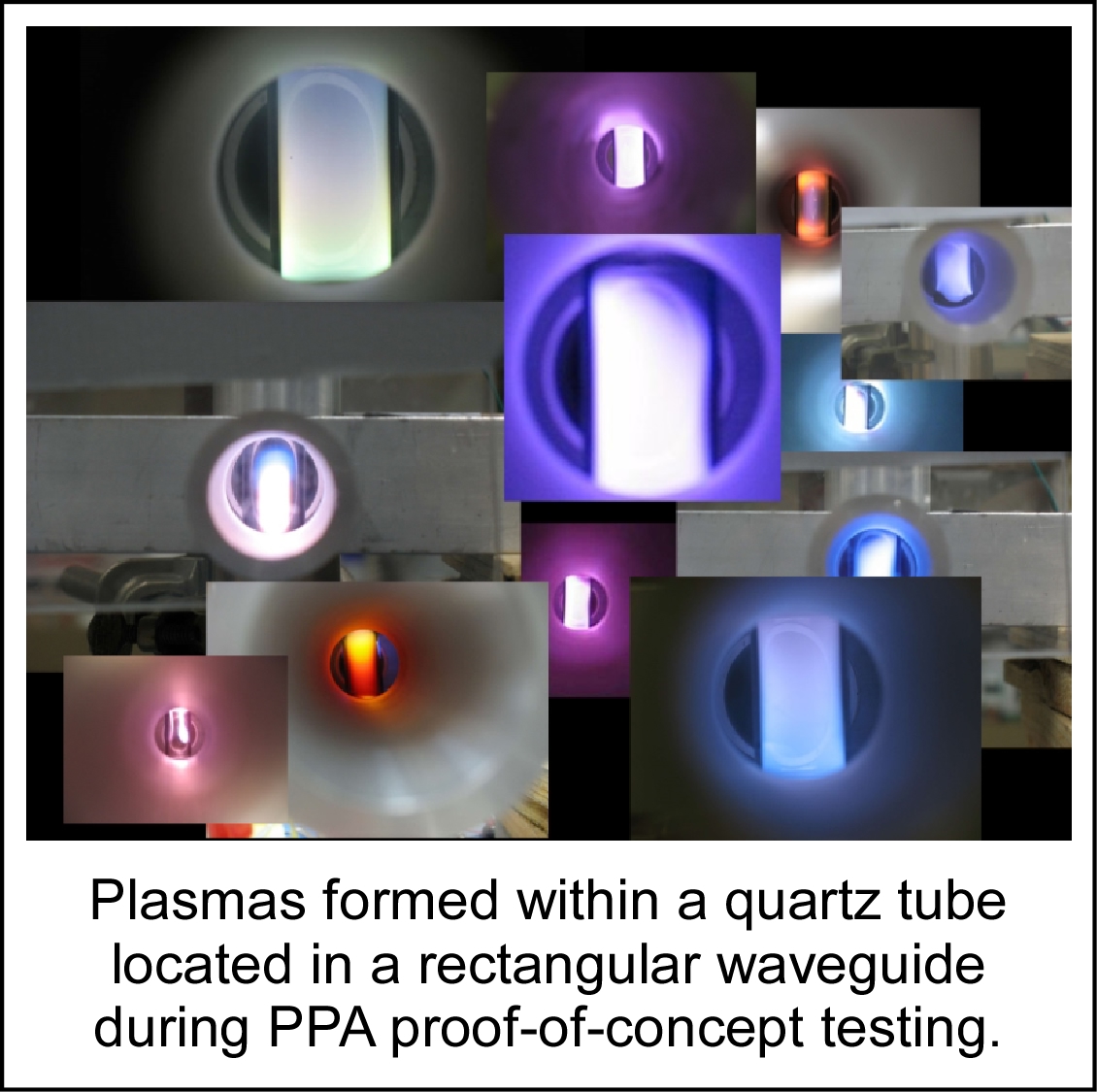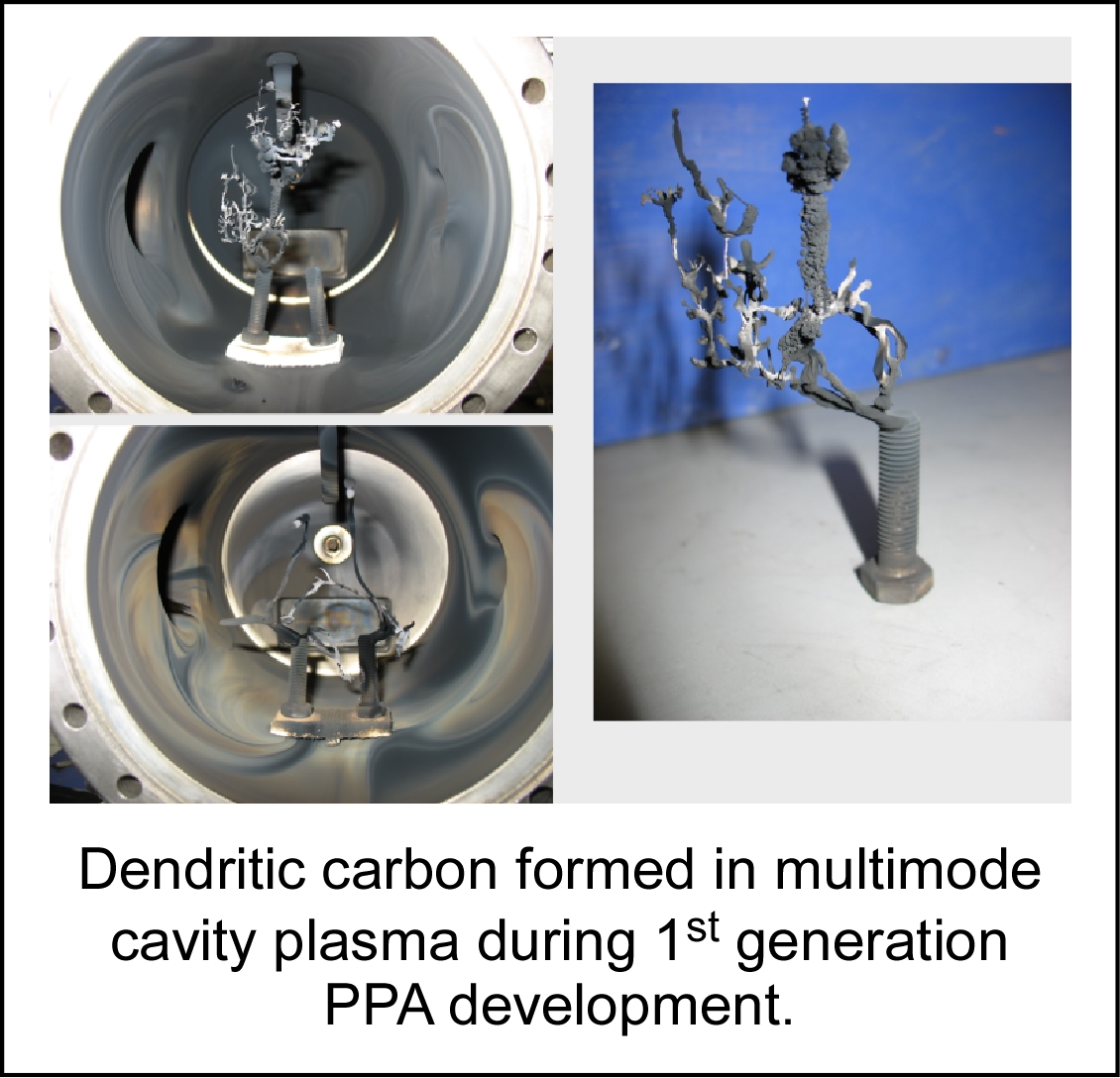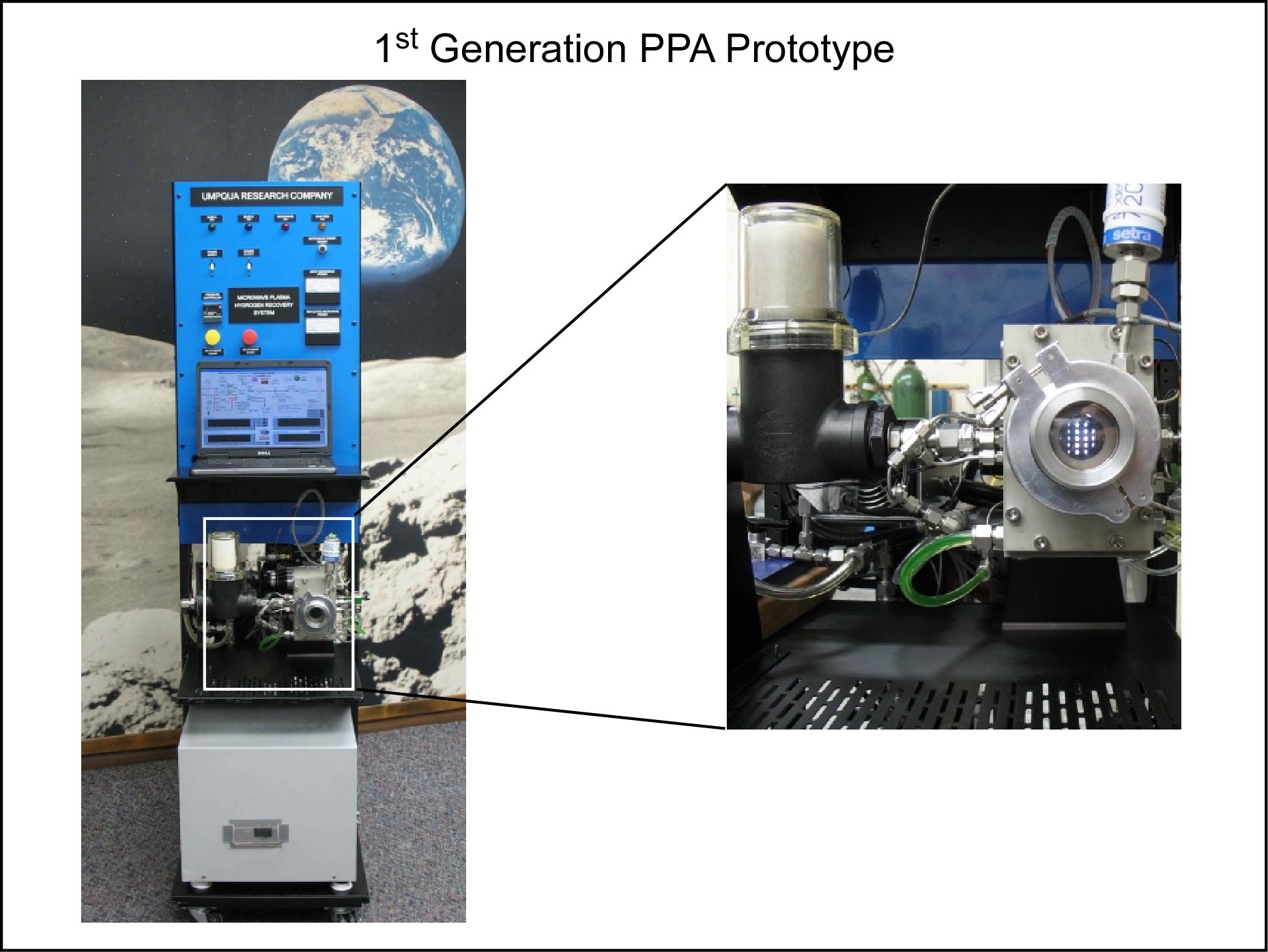Plasma Pyrolysis Assembly
|
A first generation Plasma Pyrolysis Assembly (PPA) prototype was developed for NASA to prove basic functionality of a novel microwave plasma methane decomposition technology. Methane (CH4), a byproduct of the Sabatier carbon dioxide (CO2) reduction reactor used aboard the International Space Station (ISS) to recover oxygen (O2) from waste CO2, is currently vented to space. The Sabatier reaction allows recovery of roughly 50% of the O2 in the form of water vapor via a catalytic reaction between CO2 and hydrogen (H2). The CH4 produced represents a 50% loss of required H2. The PPA technology was developed to recover up to 75% of this bound H2, which increases the O2 yield to roughly 86% for a given amount of consumed H2, thereby extending mission duration with minimal resupply of Crew Member (CM) life support O2. |
 |
 |
The 1st generation PPA technology was demonstrated as both a stand-alone device and integrated with the Sabatier Development Unit (SDU), located at Marshall Space Flight Center (MSFC) in Huntsville Alabama. In this testing, significant room for improvement was identified in both the core reactor and overall assembly design. To address these shortcomings, a Phase III advanced PPA reactor (2nd generation) development effort was initiated at Umpqua Research Company (URC) in February of 2011. The first part of this work improved both the scale (from ½-CM to 1-CM) and the efficiency of the PPA reactor technology over the 1st generation device. A Phase III extension was then awarded that scaled up the 1-CM PPA design to an even more efficient 4-CM scale, 3rd generation self-contained prototype PPA. |

Both independent and SDU integrated tests have been performed by the Advanced Life Support (ALS) Air Revitalization (AR) group at MSFC using these three PPA prototype devices. Further advancement of the technology at URC has involved an investigation of a sorbent-based, microwave regenerable hydrogen purifier (2015) and, most recently (2017), the award of an SBIR Phase I for the proof-of-concept testing of a regenerable carbon filter. Future plans (2017-2018) include the design and zero-g parabolic flight testing of a PPA device in preparation for demonstration aboard the ISS (~2021).
 |
 |
